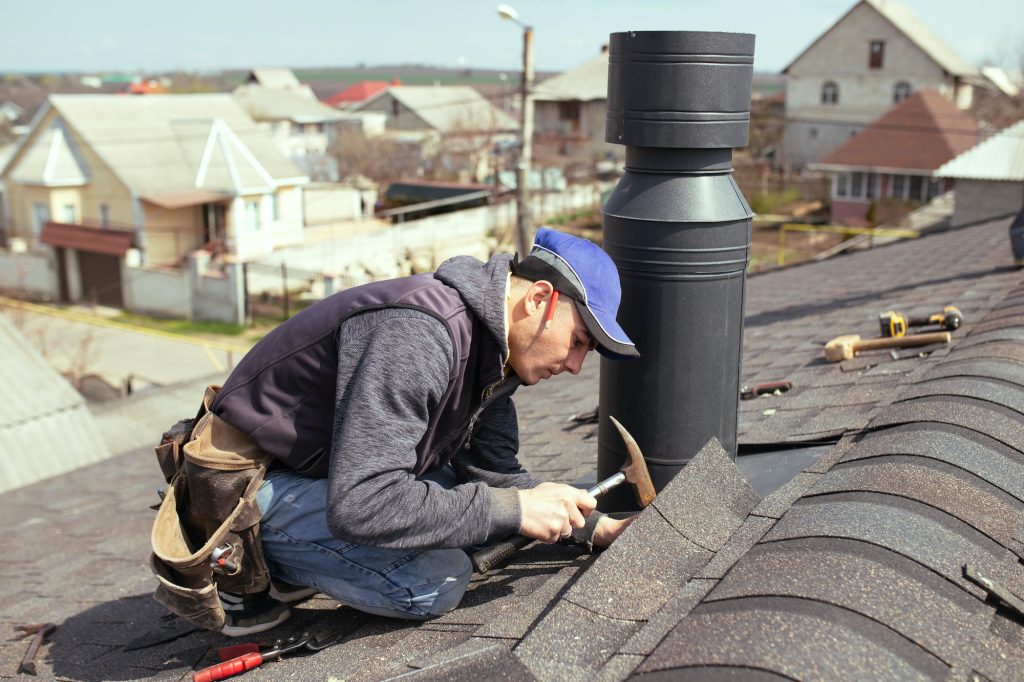Selecting the ideal roofing material for your home is a crucial decision requiring careful consideration of factors like budget, climate, durability and aesthetics. This guide provides expert tips to help you decide among the many residential roofing choices available.
Asphalt Shingles: The Budget-Friendly Standard
Asphalt shingles are the most common roofing material for homes and offer an affordable option in various styles and colors. There are a few main types of asphalt shingles:
- Three-tab shingles: The most economical asphalt shingle is composed of three tabs. More vulnerable to weather damage with a lifespan of 20-30 years.
- Architectural shingles: It is also called dimensional or laminated shingles. More layers make them better in winds and storms with a 30-50-year lifespan.
- Premium architectural shingles: Top-grade asphalt resembling wood shakes in thickness and exceptional wind resistance.
While vulnerabilities exist in extreme weather, modern asphalt shingles deliver excellent value at a relatively low cost.
Gorgeous Yet High-Maintenance Wood Shingles/Shakes
Wood shingles/shakes offer unmatched natural charm but require proper sealing and treatment to withstand moisture, mold, and pests over their 30-year lifespan. Wood will deteriorate faster than better long-term options like metal or slate without diligent maintenance.
Wood that survives ages gracefully with an elegant patina. These attractive yet high-maintenance wood shingles/shakes come at affordable prices but with shorter durability than premium materials.
Extremely Durable Slate Tile Roofing

Slate tile roofing is unmatched in durability, often lasting over 100 years. Characterized by a gorgeous layered appearance, slate tiles are highly waterproof and stand up to any weather.
High winds, storms, moisture and even fires pose little threat to quality slate tiles, which also require minimal maintenance after installation. Their natural elegance and stone texture beautifully accent a home’s kitchen remodel Richmond architecture. However, slate tiles are also hefty, requiring structural reinforcement and professional installation expertise, driving up costs substantially. But for beautiful lifelong roofing, slate tiles are hard to beat.
Clay and Concrete Tiles: Unmatched Fire Resistance
Clay and concrete tiles are related to slate, which share attractive shapes and earthy hues, though with slightly less pronounced layered textures. Both roofing materials boast exceptional lifespans exceeding 100 years.
Clay tiles provide unrivaled fire resistance and protection, meeting the highest safety standards. With innovations in clay tile engineering, many brands now also withstand heavy storms. Moderately priced than slate, quality clay tiles still range on the pricier end, given their weight and production requirements.
Concrete tiles are more affordable since they are molded from a mix of sand, cement and color pigments. Though they lack the beauty of clay, concrete tiles nearly rival clay in longevity and fire resistance at a lower cost, providing an excellent, durable roofing option for the budget-conscious.
Durable, Stylish Metal Roofing
On average, metal roofing lasts over 70 years with proper installation. Made from various metals/alloys, metal roofing brings functionality and elegance across different spaces. Expensive initially, a metal roof remains watertight and often includes reflective coatings to reduce heat absorption.
Metal roofing boasts extreme weather resistance, is non-combustible, and is easy to clean/maintain. Options exist to mimic shakes, tiles or other material types. As one of the most durable roofing types, metal is lighter than clay/concrete and has comparable longevity.
Eco-Friendly Solar and Living Roofs
Solar roof systems leverage integrated solar paneling that actively generates clean energy and reduces electrical expenses. Although installation runs higher than traditional roofing, the environmental and monetary benefits proliferate. Study your regional climate and current energy usage to evaluate if home solar power matches your needs.
Living roofs feature waterproof membranes topped with engineered soil, plants, and drainage layers that can sustain vegetation. Living roofs provide natural insulation, stormwater control and visual appeal. But they require frequent nurturing and maintenance, best left to professionals. Homeowners who can commit time are rewarded with living roofs lasting 30-50 years.
Key Considerations When Upgrading Your Roof
Keep these tips in mind when replacing your roof:
- Mind your budget and anticipate any structural repair costs needed. Prioritize lifespan value over strictly initial pricing.
- Research what roofing materials comply with local building codes and acquire the necessary permits.
- Inspect your roof structure and confirm it can handle the load weight of your desired roofing material. This is especially important for heavy materials like slate, clay or concrete tiles.
- For resale value, balance aesthetics with practical longevity and durability aspects. While wood shakes offer beauty, composite blends better withstand weathering wear/tear over decades.
You can contact Kitchen Remodel Richmond for the best services for a new and elegant look. The best remodeling service in the town.
FAQs
How much does a new roof increase home value?
Quality roofs with 30-50+ year life spans can increase home sale prices by 6% on average. Certain premium materials like slate, clay and high-end composite shingles boost value even further through exceptional durability. As a projected high-return investment at resale, proper roof upgrades make sense if aligned with your budget.
What roof shape is best?
Hip roofs with sloped sides fare better against high winds, while gable roofs provide excellent water runoff and attic ventilation. Flat roofs allow for living roof green spaces but require careful drainage engineering. Regardless of shape, ensure roofing materials meet local storm wind building standards.
How often should roofs be replaced?
It depends significantly on the material. Asphalt and wood shakes typically last 20-30 years before needing replacement, while premium materials like slate, clay, metal and advanced composite blends see 50-70+ years of service. Always inspect annually for damage or leaks. Schedule a professional roof evaluation every five years or after significant storms. An ounce of prevention saves endless headaches!